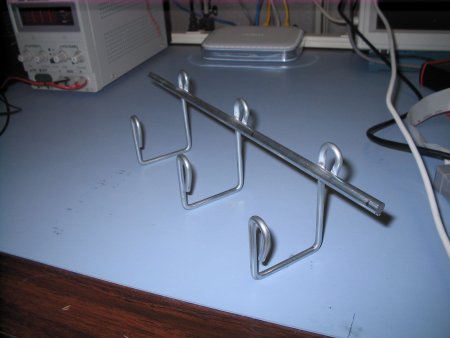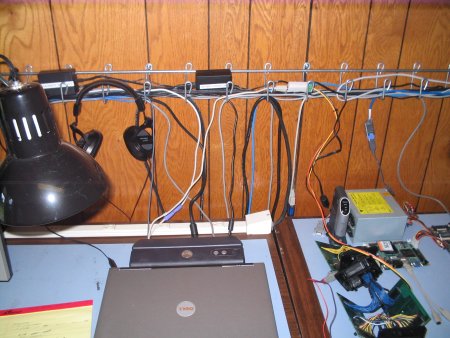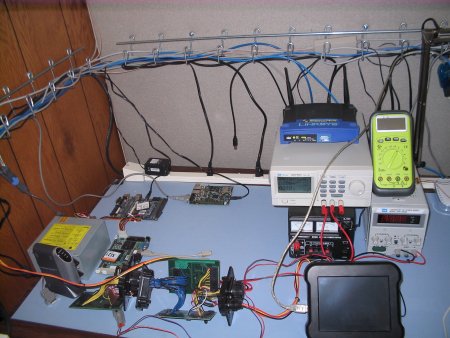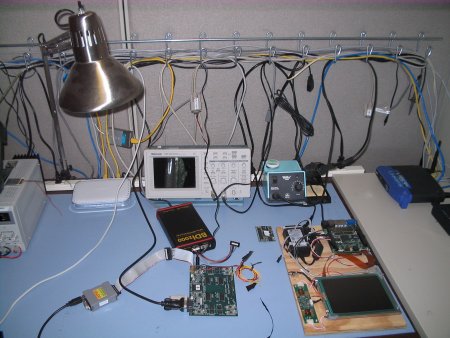Do you ever wonder if there is a better way to manage cables in your lab? I typically have have 5-10 embedded systems on the bench powered up at any give time. When you start thinking of all the cables required to connect these systems (every one requires at least power, serial console, and network), it starts to add up. I recently ran across a product called snaketray (http://snaketray.com/products/wall.html ) and decided it might be the solution to my rats-nest of cables. This article includes a few pictures of my implementation, and some ideas. I’m quite pleased with the result and have high hopes that I’ll keep my sanity for a while longer.
I’m sure there are many solutions to cable management. The IT folks managing racks of computers no doubt have lots of good solutions. There are lots of different cable ties available, etc. But, the needs of a developer are a little different in that you need a solution that can easily be changed. You need something that is not permanent where you can quickly add, change, and re-route cables as needed. Most cable management solutions are more permanent solutions not designed for flexibility. Then I read the following article: http://www.joelonsoftware.com/articles/BionicOffice.html. It occurred to me that snaketray might be the perfect solution for an embedded systems development lab. The idea of snaketray is very simple as shown in the picture below:

I installed two runs about 1.5 feet above my lab work space. There are power strips along the back of each lab surface. All cables now run in the snaketray. The idea is cables go straight into the snaketray and exit exactly where the are needed. If the cable is too long, I loop it back in the snaketray. The result is pretty amazing when you compare it to what it was before. My wife is not real impressed with how it looks — apparently she has not spend enough time under tables untangling cables 🙂
Some of the benefits I’ve discovered so far:
- even though it still looks pretty messy, I’m finding it very easy to pull cables out of the tray and re-route them — even network cables which are notorious for getting hung up due to the little plastic clip on the connector. I think the reason is the cables are always running orthogonal — in the tray and the come out at a 90 degree angle where they are needed. So if cables are not crossing each other they do not get tangled.
- bench space is not used for cables, so I have lots of space for more systems
- I’ll be more likely to try builds routinely on more targets. One of my goals is to routinely do OpenEmbedded builds for a variety of embedded systems to keep my finger on the OE pulse, and help with QA. Obviously crawling around on the floor untangling cables to connect various systems is a negative motivator for such activities.
- I have a place to put cables when I’m not using them — just put them in the tray. Before, they were left on my lab bench taking space, or falling on the floor. Now I have a few extra network and serial cables waiting in the tray for when I need them.
The bottom line is this makes me more efficient at what I do, so that I can better serve my customers and the projects I work on. I imagine snaketray would also be very useful in factory setups and other situation where you routinely need to change cabling.
What you you found that works in your lab?


